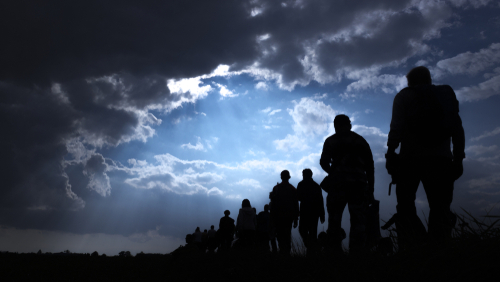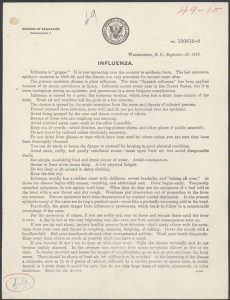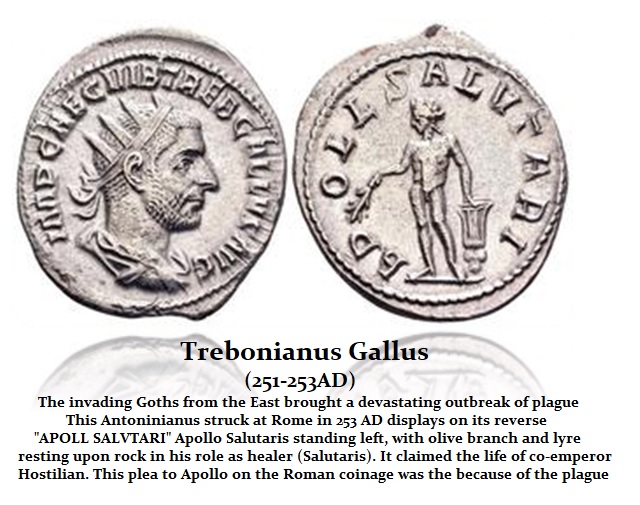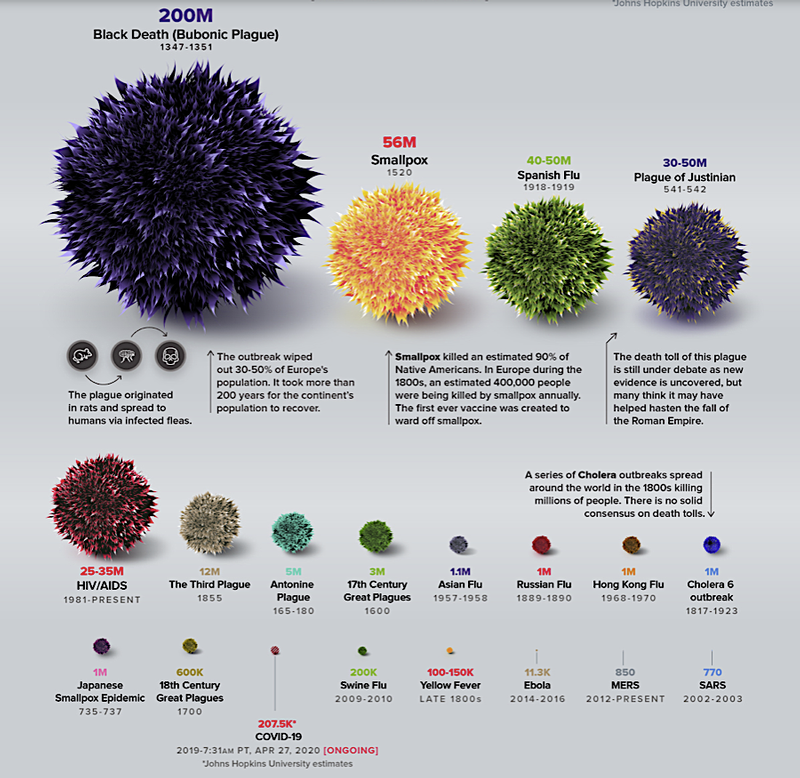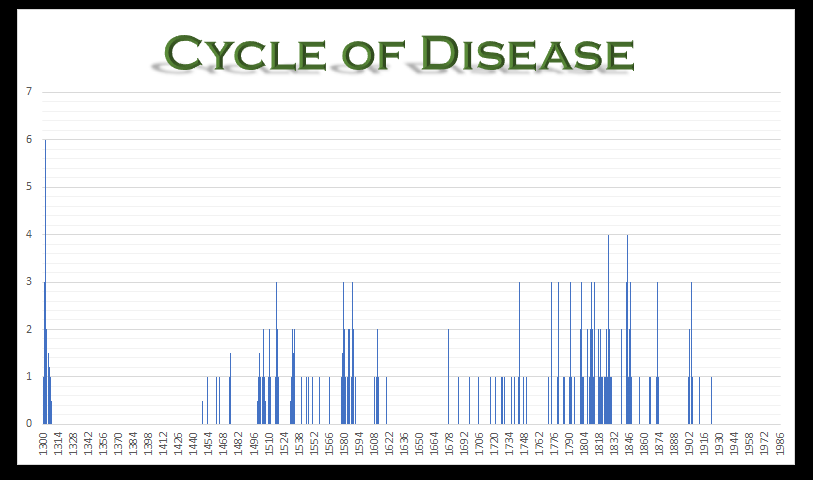The border crisis that we have in the United States is part of the cycle of disease that our model has been projecting. In late May, Sarasota County, Florida, health officials confirmed that they had identified a case of locally transmitted malaria. Then a second confirmed case appeared on June 23 rd in Texas, discovered in Cameron County. There are several thousand cases of malaria in the USA each year, but these are contracted overseas – not locally. A mosquito contracts it by biting a person who has malaria and then it bites another person giving them malaria. There have been ABSOLUTELY ZERO domestic malaria cases in over 20 years.
The source of this disease is clearly the migrants that Biden has been letting in in hopes of granting them citizenship so they can vote for him in the 2024 election against working Americans. The other plan is to offer them citizenship by signing up for the military since our volunteer army is understaffed. Those reasons aside, this mass migration comes with zero health requirements but then an employer cannot hire someone who does not have a SS# to pay taxes. Hence, they are here for a free ride.
A simple review of history reveals that such massive waves of disease with drastic death rates have ALWAYS, and without exception, been mostly linked to war where soldiers are sent to fight in foreign lands and bring home with them a new plague and mass migrations.
During the 14th century, rumors of a great plague in China and India killed most of their population. The plague made its way to Europe when the Kipchak forces besieged the Genoese trading post in Crimea – the disputed territory in Ukraine. The Kipchaks began to catapult plague-infested corpses over the walls and into the trading post. The disease spread quickly, and the Genoese abandoned the outpost. They sailed back to Europe, stopping in Sicily in 1347, taking back the Black Death. From there, it quickly engulfed all of Europe.
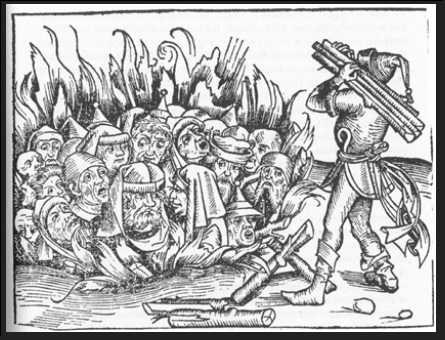 The Black Death occurred during Edward III’s reign (1327-1377), and contemporary accounts place the devastation between 30% and 50% of the population throughout Europe. Human nature never changes throughout the centuries. Just as we saw during COVID how they pushed Pfizer’s vaccines and refused to acknowledge the side-effects that even killed many, they demonized the unvaccinated. The very same took place during the Black Death.
The Black Death occurred during Edward III’s reign (1327-1377), and contemporary accounts place the devastation between 30% and 50% of the population throughout Europe. Human nature never changes throughout the centuries. Just as we saw during COVID how they pushed Pfizer’s vaccines and refused to acknowledge the side-effects that even killed many, they demonized the unvaccinated. The very same took place during the Black Death.
While it was the “unvaccinated” during COVID, they blamed the Jews during the Black Death. Indeed, the Jewish population of Europe was turned into the spreader of the plague between 1347-1350. The Jews were accused of creating and spreading the plague (Cantor 2001; In the Wake of the Plague. Simon and Schuster, New York, NY.)
In Spain, Germany, and Italy, Jewish families were marked with distinctive clothing, isolated, and killed. Hitler was not the first to require distinctive clothing to identify the Jews. He got the idea from the Black Death. When the plague hit southern France in 1348, the hatred of the Jewish people was unleashed. Four Jewish citizens were dragged from their houses and burned at the stake on the mere accusation that they had poisoned the town’s water supply with plague.
The initial charges of spreading the plague in southern France led to an outbreak of accusations and an explosion of death where more than 2,000 Jews were burned alive in France and Germany (Tuchman 1978; A Distant Mirror: The Calamitous 14th Century. Ballantine Books, New York, NY.) With COVID, they were using the status of being unvaccinated as an anti-government rebel who would not comply.
Once the Jews became the scapegoats during the Black Death, that distinction remained for centuries. The Spanish King Ferdinand and Queen Isabella (1474-1504) initially tried to protect the Jewish population from the Spanish Inquisition about 100 years later because of their economic importance throughout the country as moneylenders. Nevertheless, there was no return to normal once society had been divided during the Black Death, even 100 years later. Thus, blaming the Jews continued, eventually leading to The Spanish Inquisition in 1478. This is what we need to fear that the division within society between the vaccinated and non-vaccinated will remain a strategy employed by our governments for decades to come. They were restricting travel to required vaccination because the unvaccinated were people who resisted tyranny. The Black Death divided society, as we have seen during COVID. We will see this rise again as we will also see lockdowns to protect the government now firmly in control of the Neocons.
(Click on the image to enlarge)
The document above was issued by Washington, D.C., on September 26, 1918, in response to the Spanish flu. The document states that the virus circulates annually in the US but is “more contagious during an epidemic, and pneumonia is a more frequent complication.” It explicitly states: “do not get hysterical over the epidemic.” That is the opposite of what they did during COVID against all medical norms. The government in 1918 admitted the virus only lasted a short time outside the body and suggested that people avoid those sick or having sick persons directly sneeze or cough on them (seems very fair). Wash your hands, stay home if you are sick, sleep, and eat well. Fresh air helps. “Fight the disease rationally and do not become unduly alarmed.” We were told during the experimental COVID tyranny to lock down, do not go outside, and cash was now lethal. These were all manipulations to prepare us for authoritarian rule and the elimination of paper money.
Throughout history, both migrations and war spread disease. Our cyclical models correlate the two stunningly. The Antonine Plague, sometimes referred to as the Plague of Galen, erupted in 165 AD, at the height of Roman power throughout the Mediterranean world during the reign of Marcus Aurelius Antoninus (161-180AD). The first phase of the outbreak would last until 180AD affecting the entirety of the Roman Empire. The Antonine Plague of 165 to 180AD was the first known pandemic impacting the Roman Empire. It was most likely contracted by soldiers who were returning from campaigns in the Near East and spread throughout the empire.
That was the same correlation we found with the Black Death taken to Crimea by the invading forces from Asia. The Antonine Plague most likely took the life of Roman Emperor Lucius Verus. According to the Roman historian Cassius Dio, the disease broke out again nine years later, in 189 AD. That time he said, it caused up to 2,000 deaths per day in Rome itself. The total death count at the time ranged between 5 and 10 million. About 25% of those who contracted the plague died. This amounted to about 10% of the population being reduced.
The next plague came in 251-266 AD and is known as the Plague of Cyprian, taking its name from St. Cyprian, the bishop of Carthage who witnessed and described the plague. Some historians have suggested that this plague also represents a useful starting point for understanding the beginning of the decline of the Roman Empire in the West and the underpinning of its ultimate fall. Once again, it was brought from Asia by invading armies. Emperor Trajan Decius (249-251AD) and his oldest son Herennius Etruscus (251AD) were killed in battle against the invading Goths. His youngest son, Hostilian (251 AD), died of the plague they brought with them to the Roman Empire.
This coin was issued by Trebonianus Gallus (251-253AD), appealing to Apollo Salutaris, who was believed to have been the god of healing to save the Empire. The Plague of Cyprian infected the Roman Empire from about 249 to 262 AD. It is not known precisely what it was. But from the description, it may have been smallpox, measles, or a viral hemorrhagic fever like Ebola. We know that this plague weakened Rome during the 3rd century, causing a widespread decline in the workforce. That resulted in food shortages and for lack of manpower to produce food for the Roman army. This contributed greatly to the collapse of the 3rd century and the price inflation in food as we are experiencing today.
The next disease cycle was during the reign of Byzantine Emperor Justinian I (527-565AD) and is thus known as the Plague of Justinian (541-542AD). This was the third major plague that struck during the 6th century. Research has been conducted on skeletons that have survived. It has been confirmed that DNA from Yersinia pestis—the same bacterium responsible for the Black Death. This plague also became a pandemic that spread throughout the Mediterranean region, yet it coincided with a Volcanic Winter, reducing the food supply. A mysterious cloud appeared over the Mediterranean basin, according to the historian Procopius of Caesarea (Procopius Caesarensis; c. 500-560 AD), who wrote:
“The sun gave forth its light without brightness, and it seemed exceedingly like the sun in eclipse, for the beams it shed were not clear.”
This was a volcanic cloud that blocked the sun setting in motion climate cooling for more than a decade. Crops failed, and there was widespread famine. This deadly combination of disease and climate change cooling set in motion a death spiral that swept through the Eastern Roman Empire killing 5,000 to 10,000 people per day in Constantinople.
War and migration have been the catalyst for disease. Why? The movement of populations from one region to another has historically spread disease. Even when the Europeans visited America, they brought diseases that killed many Indians. The National Institutes of Health estimated that 95 percent of the indigenous populations in the Americas were killed by infectious diseases during the years following European colonization, amounting to an estimated 20 million people. Likewise, Europeans who had sex with Indian women brought back to Europe Syphilis which did not previously exist in Europe.
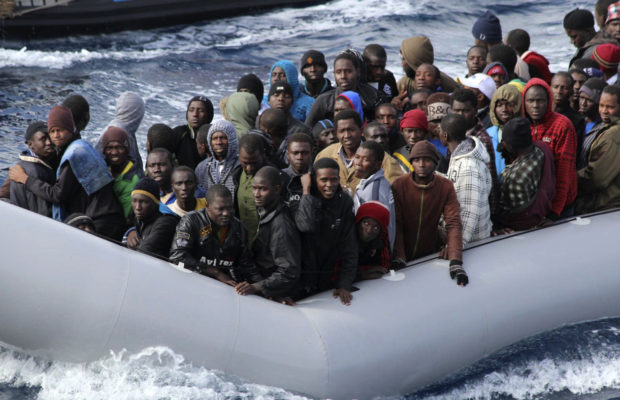
Migrants sit in a boat during a rescue operation by the Italian navy off the coast of Sicily on Nov. 28. Italy is looking to revamp the way it handles the hundreds of thousands of migrants who arrive annually.
The massive migrations both in Europe and the United States are also impacting the disease cycle. What is fascinating is that there were exactly 86 years between the Antonine Plague and the Plague of Cyprian. There were about 34 intervals of 8.6 years until the first signs of the major event of the Justinian Plague, but this was also impacted by climate change and the plunge in temperatures.
This disease cycle hits significantly in 2046.

